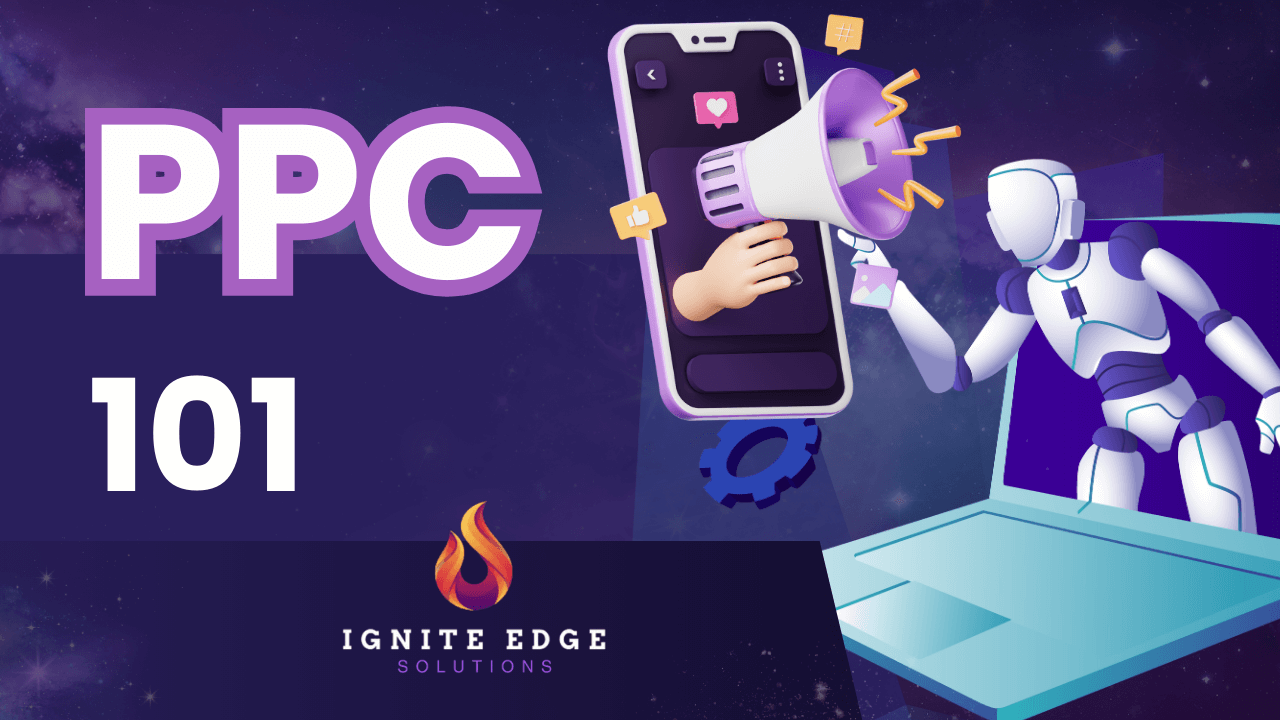What is PPC Advertising and How Does it Help Small Businesses?
So what is PPC advertising? PPC advertising, or pay-per-click advertising, is an online marketing model where businesses pay a fee each time their ad is clicked. This approach allows small businesses to gain immediate visibility in search results, ensuring they connect with potential customers actively searching for their products or services.
One of the primary benefits of PPC advertising for small businesses is targeted traffic. By selecting specific keywords and demographics, businesses can attract users who are more likely to convert into customers. Additionally, PPC provides budget control, enabling small businesses to set daily or monthly spending limits, ensuring they stay within their financial means.
For example, a local bakery that uses PPC advertising might target keywords like “fresh pastries near me,” allowing them to reach customers in their area looking for baked goods. This targeted approach can lead to increased foot traffic and sales.
PPC advertising facilitates immediate visibility on search engines, driving traffic to your website almost instantly. It enables businesses to target specific demographics and locations, ensuring that ads reach the most relevant audience. Additionally, the measurable results provided by PPC platforms, such as Google Ads, empower businesses to make data-driven decisions and optimize their campaigns for better performance.
Benefits of PPC Advertising for Small Businesses
The advantages of PPC advertising for small businesses are manifold:
- Immediate Visibility: PPC allows businesses to secure top positions on search engine results pages (SERPs) quickly. This immediate visibility helps enhance brand awareness and drive traffic to your website almost instantaneously.
- Controlled Budget Spending: With PPC, you have the flexibility to set daily or monthly spending limits. This control ensures that you stay within your budget while adjusting bids for clicks as needed.
- Targeted Advertising: PPC platforms offer robust targeting options based on demographics, interests, and geographical locations. This precision allows you to reach a highly relevant audience, increasing the likelihood of conversions.
- Performance Insights: The ability to track metrics such as click-through rates (CTR), cost per click (CPC), and conversion rates provides valuable insights into your campaign’s effectiveness. These insights help you make informed decisions and refine your strategy for better results.
Setting Up a PPC Advertising Campaign: A Step-by-Step Guide
Establishing a successful PPC campaign involves several key steps:
- Choose the Right PPC Platform: Start by selecting the most suitable PPC platform for your business. Google Ads is a popular choice due to its extensive reach, but other platforms like Bing Ads, Facebook Ads, or LinkedIn Ads might also be relevant depending on your target audience.
- Define Your Campaign Objectives: Clearly outline your campaign goals, whether it’s increasing sales, generating leads, or driving traffic. Setting specific Key Performance Indicators (KPIs) such as CPC, CTR, and conversion rates will help you measure success.
- Conduct Keyword Research: Effective keyword research is essential for a successful PPC campaign. Use tools like Google Keyword Planner and SEMrush to identify relevant keywords. Focus on a mix of generic and long-tail keywords and consider negative keywords to exclude irrelevant terms.
- Organize Keywords into Ad Groups: Structure your keywords into well-defined ad groups. This organization enhances ad relevance and improves overall campaign performance.
- Write Compelling Ad Copy: Craft engaging headlines and concise descriptions that capture attention. Ensure your ad copy includes a strong call-to-action (CTA), such as “Buy Now” or “Learn More,” to drive user engagement.
- Set Your Budget: Determine your budget for the campaign, setting daily or monthly limits as needed. Start with conservative bids and adjust based on the campaign’s performance.
How to Choose The Right Keywords for Your Campaign
Selecting the right keywords is crucial for the success of your PPC campaign. Different keyword match types allow you to control how closely the search queries must match your chosen keywords:
- Broad Match: Your ads appear for searches that include synonyms and variations of your keywords. This match type offers a broad reach but may result in less targeted traffic.
- Phrase Match: Ads appear for searches containing the exact phrase with additional words. This option balances reach and relevance.
- Exact Match: Ads only appear for searches that exactly match your chosen keywords or close variations. This type provides the most targeted traffic but may limit your reach.
Utilize keyword research tools and analyze competitor strategies to refine your keyword selection. Focus on high-intent and long-tail keywords to improve your campaign’s return on investment (ROI).
Creating Compelling Ad Copy That Converts
Crafting effective ad copy is vital for capturing user attention and driving conversions. Consider these elements:
- Strong Headlines: Create headlines that stand out and draw users in. For example, “Exclusive 50% Off on First Purchase” can attract attention and encourage clicks.
- Clear Value Propositions: Communicate the benefits of your product or service clearly. Phrases like “Get Next-Day Shipping on All Orders” highlight key advantages.
- Persuasive Call-to-Action (CTA): Use actionable CTAs such as “Shop Now and Save 20%” to prompt immediate action from users.
- Ad Extensions: Enhance your ad with additional information through sitelinks, callouts, and location details. These extensions can improve ad relevance and user engagement.
- Split Testing: Test different versions of your ad copy to determine which elements drive the best results. Experiment with various headlines, value propositions, and CTAs to find the most effective combination.
Optimizing Landing Pages for PPC Success
The landing page plays a crucial role in converting visitors from your PPC ads. Ensure that your landing page aligns with the ad’s messaging and provides a seamless user experience:
- Match Ad Messaging: Ensure that the headline and content of your landing page align with the ad to reduce bounce rates and improve relevance.
- Strong CTAs: Place prominent and actionable CTAs such as “Get Started Now” or “Claim Your Free Trial” to encourage conversions.
- User-Friendly Design: Design your landing page to be clean, mobile-responsive, and fast-loading. A user-friendly layout enhances the overall experience and increases the likelihood of conversion.
- Incorporate Social Proof: Include testimonials, case studies, or reviews to build trust and credibility with visitors.
Monitoring and Analyzing Your PPC Performance
Regular monitoring and analysis of your PPC campaigns are essential for optimizing performance:
- Click-Through Rate (CTR): Measure the effectiveness of your ad copy and targeting by tracking CTR. A high CTR indicates that your ads are resonating with users.
- Conversion Rate: Assess how well your landing pages are converting visitors into customers. A high conversion rate signifies that your landing pages are effective.
- Cost Per Click (CPC): Monitor CPC to manage your budget and ensure cost-efficiency. Lower CPC can improve your overall return on investment.
- Return on Ad Spend (ROAS): Evaluate the revenue generated for every dollar spent on advertising. ROAS helps determine the profitability of your campaigns.
Utilize tools like Google Analytics and platform-specific dashboards for comprehensive performance reporting and insights.
Common PPC Mistakes to Avoid
Avoiding common mistakes can significantly improve your PPC campaigns:
- Poor Keyword Selection: Ensure thorough research to select relevant and effective keywords. Avoid overly broad or irrelevant keywords that may waste your budget.
- Neglecting Negative Keywords: Incorporate negative keywords to exclude irrelevant search terms and prevent wasted spend.
- Low-Quality Ad Copy: Focus on creating high-quality, specific, and compelling ad copy to enhance performance and attract the right audience.
- Inadequate Budget Management: Set realistic budgets and monitor spending to stay within limits. Adjust bids and budgets based on campaign performance and goals.
- Poor Landing Page Optimization: Optimize landing pages to match ad messaging, improve user experience, and drive conversions.
By addressing these common pitfalls, you can enhance your PPC campaign’s effectiveness and achieve better results.
Ready to take the next step? Contact us today to learn how we can assist you!



1 thought on “PPC 101: What is PPC Advertising”
I am really impressed together with your writing skills as well as
with the format to your blog. Is this a paid subject or did
you customize it your self? Anyway stay up the nice high quality
writing, it’s uncommon to see a great blog like this one these days.
Snipfeed!